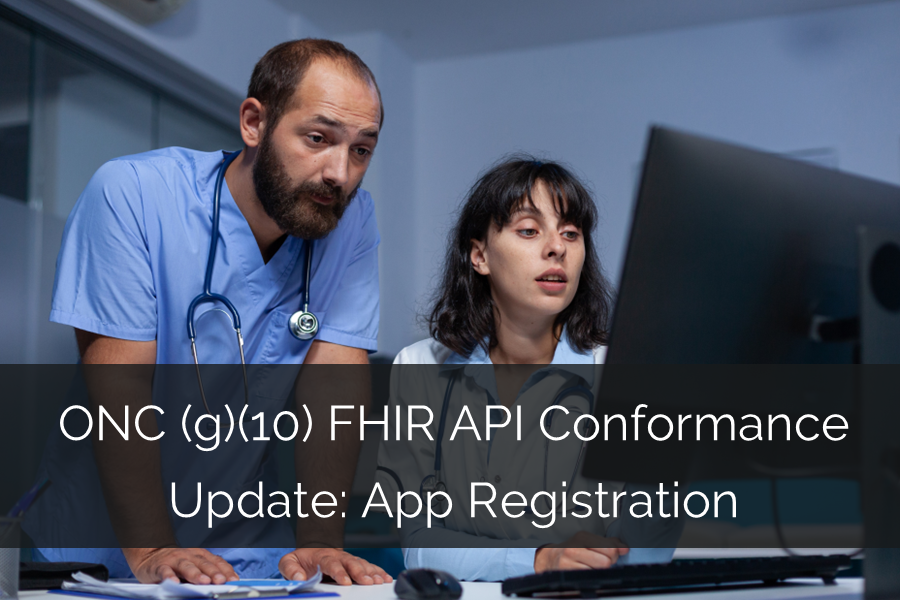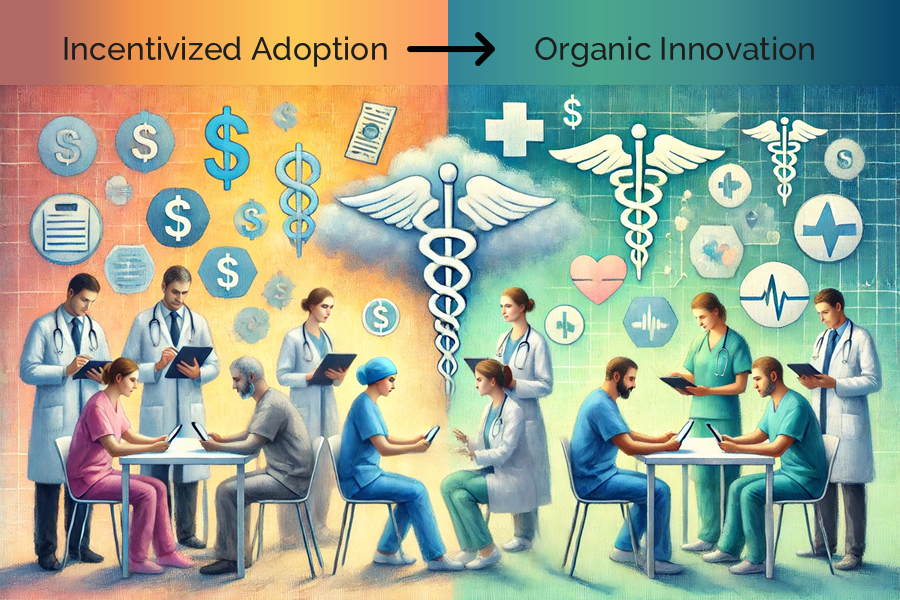Is (g)(10) FHIR API Certification Keeping You Up at Night?
When you completed the bi-annual ONC Attestations for your EHR for Conditions and Maintenance of Certifications, you could tell that ONC is getting serious about Cures Act compliance and the deadlines. It is becoming clear that there are no more deadline extensions on the horizon. As the clock ticks away, some of the milestones have been realized as written in the Interim Final Rule (Information Blocking, USCDI V1, RWT, and the most recent, 1st ONC Conditions and Maintenance Attestations), while others are approaching fast (Expansion of PHI to EHI, 2nd ONC Conditions and Maintenance Attestations, and the most feared (g)(10) FHIR API.
These Deadlines are Here to Stay
So, if the deadlines are not going away, it would be prudent to do a reality check of where your EHR stands today in terms of the work completed, and the work that needs to be done. Dec 31, 2022, for the (g)(10) FHIR API might seem far away, but the real deadline is more like Nov 15, 2022, by when you need to be ready for pre-testing to get certified. That gives you only about 135 development days in 2022 to understand all the detailed requirements included in the Implementation Guides, AND complete all the tasks to successfully certify for:
Cures Updates to your C-CDA (affecting multiple criteria)
(g)(10) FHIR-Based API
Real-World Plans and Testing (annually recurring)
We are hearing from some of the best EHR development teams we are working with that it is taking them anywhere from 12 – 18 months from start to finish. This is with a team that understands FHIR APIs. Even the teams that started 5-6 months back are running into many unanticipated issues.
How far along is your EHR on this development road? Would you be able to finish in time to get (g) (10) Certified by the Dec 31, 2022, deadline?
Let Us Help You do a Reality Check
Cures Update is Not a One-and-Done
2015 Cures Update EHR Certification is unlike any other Certification editions that precede it. It is not a “One and Done” certification. There is a “Maintenance” component to it.
The ONC Conditions and Maintenance Attestation needs to be completed twice a year (Apr 30 and Oct 30), every year, as a requirement to keep the 2015 Cures Updates Certification for your EHR.
Real World Test Plan (RWT) needs to be submitted in November of every year; it would be published on CHPL by March of the following year. Then your EHR would be observed for how well it was able to execute the plan you submitted to the ONC via functional and summative results of the RWT plan.
Failure to submit any of the attestations or the RWT plan by the deadline each year could result in De-Certification of your EHR.
Discover a Better Way for Your EHR’s 2015 Cures Update Certification Maintenance
Penalties are Real
As of Apr 5, 2021, ONC is actively publishing and updating the active Information Blocking claims counts on a regular basis. On the heels of these increasing cases of Information Blocking, several mid to large EHRs have been slapped with multi-million-dollar penalties as their EHR failed to meet the requirements that they “Tested” with their ONC-ACTB. How would it impact the providers using these EHRs? We are yet to see the final fallout of these transgressions.
The criteria involved in the required Cures Updates (b-1, 2,10), (e)(1), (g-6 – 10) have various degrees of difficulty, especially the (g)(10) FHIR-based API, which has an extreme learning curve. With the limited number of days left in the year, it is very important to avoid risky shortcuts to meet the deadlines. That could expose your EHR to penalties and fines. How do you prevent your EHR from falling into the Certification Ware trap?
Learn the Right Way to Meet Cures Update Requirements and Avoid the Penalties
Discover a Simple Solution
If you’ve been losing sleep over (g)(10) FHIR API Certification, know that you are not alone. Many EHRs are in the same predicament. During our Webinar we addressed some of the burning questions. Being the Nation’s first FHIR-Based Cures Update certified company, our team of experts has lived and breathed the (g)(10) FHIR API and Cures Update requirements for over two years now. So, we know a thing or two that others do not. In this Webinar, we will discuss how you can significantly reduce the time and costs of developing these features internally and generate additional revenue opportunities. Yes, you read that right. We have developed a revenue-share model that will allow you to offset your costs and generate additional revenue. Contact us to learn more about:
Demystifying Cures Act requirements
Technical deep dive into the certification requirements
“There is an App for that” – Cures Act requirements and what it means for Developers
Learn what is under the hood of the Inferno testing tool
Lessons learned and gotchas on certification, as well as the use of FHIR API in the real world (based on our experiences over the last 2 years)
Plug-n-Play solution to meet current and upcoming deadlines in a matter of days
Flexible hosting and pricing options














